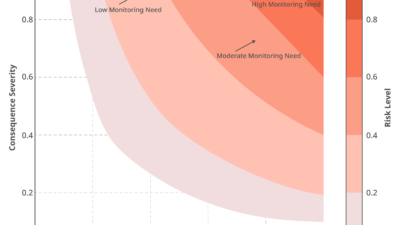By utilizing these CMMS capabilities maintenance professionals gain the upper hand for meeting the practical demands on their departments as well as the strategic goals of their organizations.

Restaurant managers who assign one waiter to deliver your spoon, a second one to drop off a fork, and a third to bring over a knife would hardly be considered models of efficiency – especially if all three members of the wait staff spent time ambling around the building looking for your table.
Maintenance managers may not face situations that are quite as far-fetched. Yet how many times have managers found they’ve assigned three different technicians to work on the same asset – because three separate work orders (WOs) were generated from a trio of disconnected preventive maintenance tasks(PMs)? And, to make matters worse, technicians lose time searching for the location of a specific asset, which can then drives up costs and impact the maintenance budget.
For each of these problems, a modern computerized maintenance management system (CMMS) can offer a solution – because managers can tap the capabilities of the CMMS to stack PMs, map assets, and manage budgets.
Here is a closer look at using these three features of an advanced CMMS:
Stacking PMs
PM stacking, sometimes called PM sequencing, simply refers to consolidating PMs into one "stack," like placing poker chips on top of each other so they can be moved as a single unit. Instead of creating three distinct work orders for three different PMs, the CMMS generates one WO for multiple tasks that share the same schedule , whether the PM is slated to be performed weekly, monthly, or annually. For example, suppose a piece of equipment has PMs for greasing gears on a weekly basis, changing fluids monthly, and replacing filters annually. By stacking PMs and synchronizing the schedule, all three of these tasks can show up on a single WO.
This coordinated approach means one technician, not three, complete all of those WOs for a single piece of equipment. And a sophisticated CMMS also enables maintenance managers to control which PMs are merged into one WO, rank the order of PMs to show which is dominant, and stack an unlimited number of PMs together. Further, based on the required spare parts reserved for the stacked PM work order, the CMMS can adjust the parts inventory count after the WO is closed out.
Mapping assets
A vast manufacturing facility, medical complex, or company with departments spread throughout an industrial park may have multiple street or physical addresses. For these types of enterprises and others, the ability to find the location of a specific asset can save valuable time and cut costs. Maintenance professionals can use a CMMS to create a geographical map of all physical plant sites, assets, and associated work orders. That means, managers will be able to know at all times where assets are and their current maintenance status – and have the ability to gather quick driving directions to their location, if needed.
Managing budgets
While financial documents might seem to be flat, linear, two-dimensional accounts with rigid columns of figures, the fact is that a company’s numbers can be viewed from a variety of vantage points. A maintenance manager, then, may be called on to present budget figures that can be analyzed from any number of angles. A feature-rich CMMS should be able to provide managers with budget templates that track asset maintenance costs by PMs or corrective maintenance work orders, including labor, time and materials, or by set schedules. In addition, users should be able to review expenditures by month, quarter, or year.
For instance, if the CFO allocates $10,000 for annual PMs, and $30,000 for corrective maintenance, managers need to be able to break down costs for each work order to show what was spent and on what – and CMMS reports enable them to do just that. It is also helpful if managers can identify monthly "peaks and valleys" – the shifting level of WOs from month to month – in order to analyze asset performance and create better budget projections. And, the CMMS should allow users to export budget summaries to other reporting systems or spreadsheets to make it easier for others in the company to access and manage maintenance department data.
By utilizing these CMMS capabilities, whether stacking PMs, mapping assets, or managing budgets, maintenance professionals gain the upper hand for meeting the practical demands on their departments as well as the strategic goals of their organizations.
Paul Lachance is president and chief technology officer for Smartware Group, Inc., producer of the newly redesigned Bigfoot CMMS. Lachance has been developing and perfecting CMMS for the maintenance professional for more than 20 years. Contact Paul directly at [email protected] or visit bigfootcmms.com.



